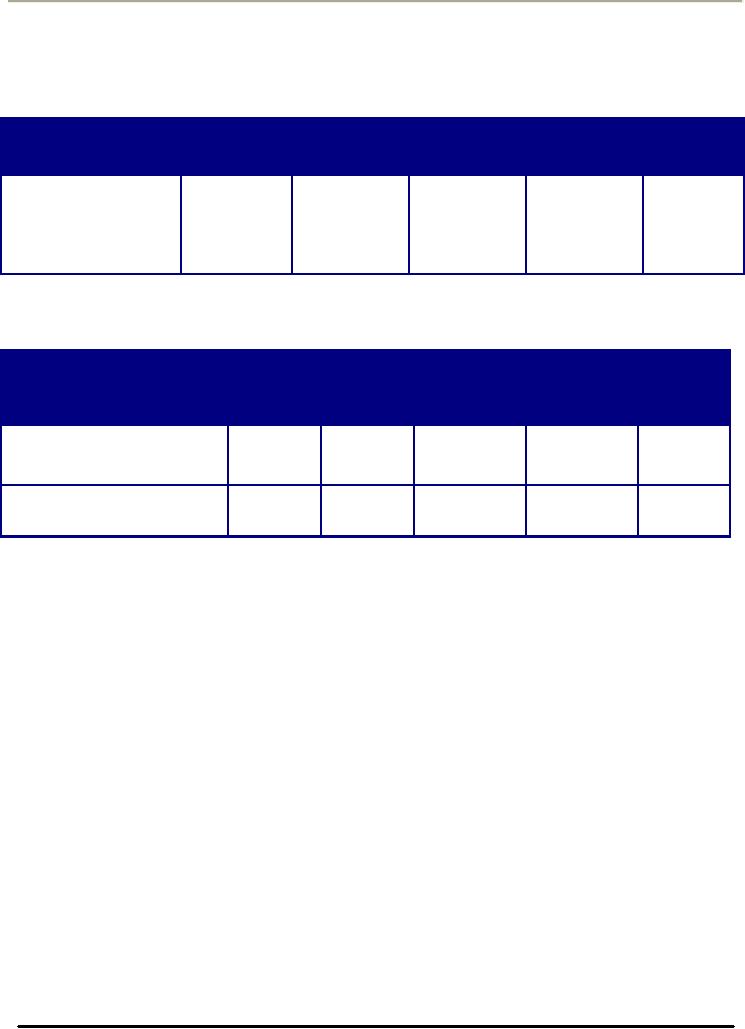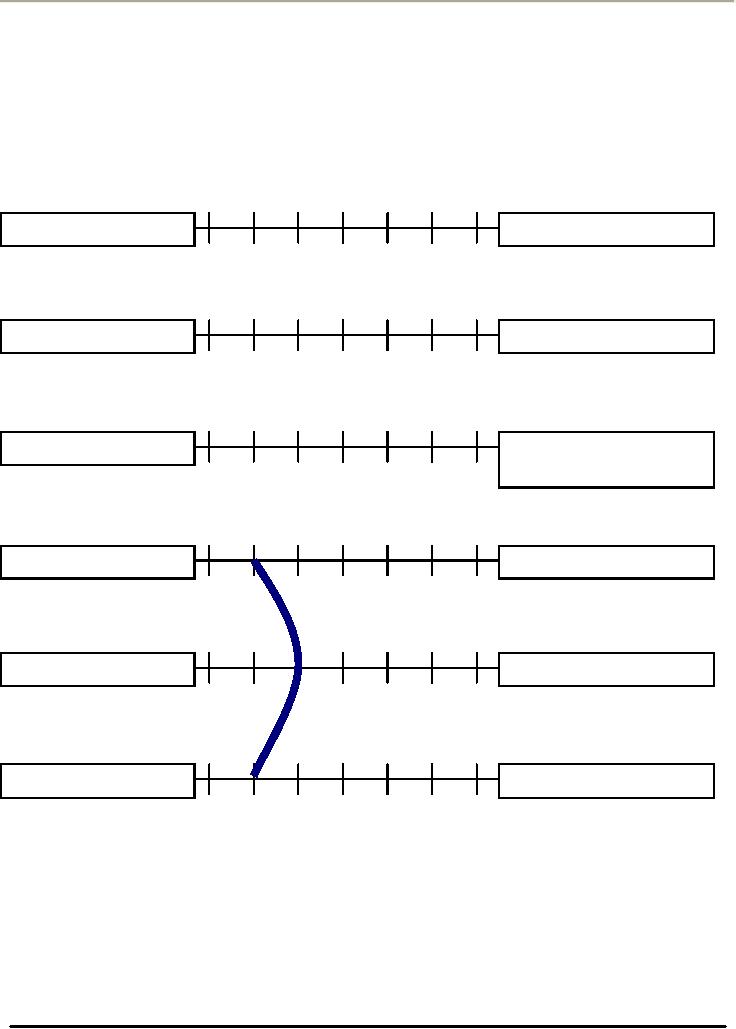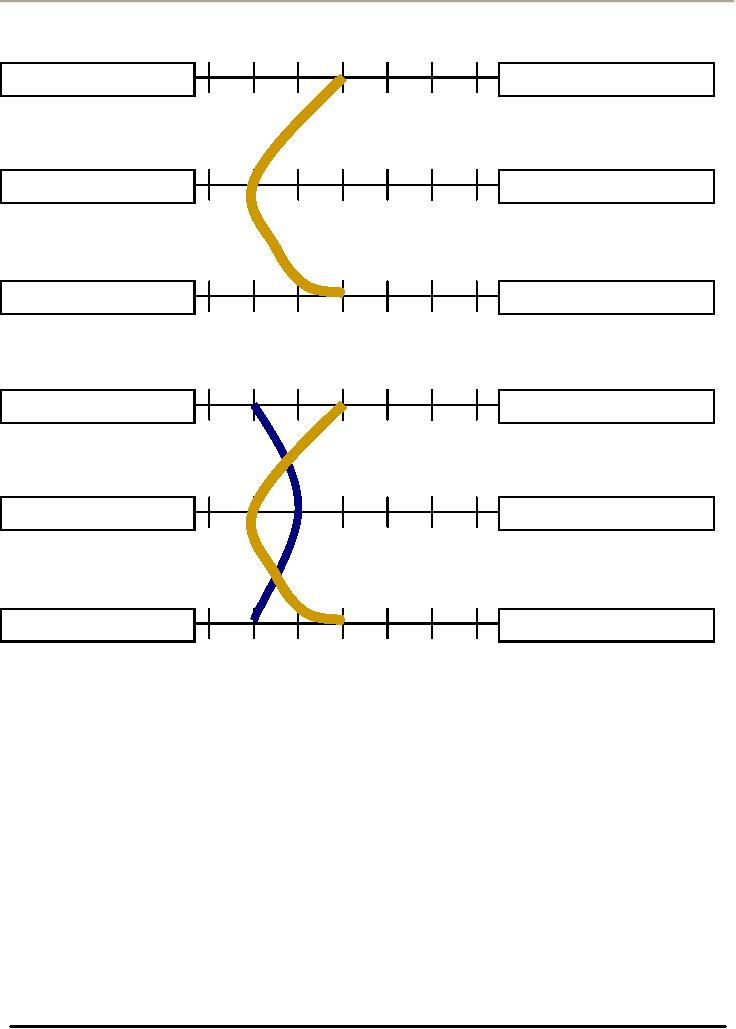 |
QUANTITATIVE RESEARCH DATA COLLECTION TECHNIQUES:ATTITUDE SCALES |
| << QUANTITATIVE RESEARCH DESIGNS & DATA COLLECTION METHODS |
| QUALITATIVE RESEARCH DESIGNS & DATA COLLECTION METHODS >> |

Consumer
Psychology (PSY -
514)
VU
Lesson
09
QUANTITATIVE
RESEARCH DATA COLLECTION
TECHNIQUES
OBJECTIVES:
o
Understanding
Attitude
o
Defining
the Attitude Scales
o
Learning
four types of Attitude
Scales:
Liker
Scale
1.
Satisfaction Measures
2.
Importance Scales
Semantic
Differential Scale
Behavior
Intention Scale
Rank
Order Scale
ATTITUDE
SCALES
To
be successful a company must
understand the needs of specific
groups of consumers and then
satisfy these
needs
more effectively than the competition
does. Studying consumer behavior in
all its ramifications
enables
marketers
to predict how consumers react to a
certain promotional message
and to understand why they
make
certain
decisions they do. So it becomes
important for the researchers to
understand attitudes of the
consumers
Attitude
Attitude
is a relatively stable disposition to act
in a certain way towards a
target objective
Attitude
Scale
Instruments
used to capture evaluative
data. Researchers provide
respondents with a list of products or
product
attributes
for which they are asked to
indicate their relative feelings or
evaluations
Types
of Attitude Scales
Most
frequently used attitude
scales are:
Likert
Scale
Semantic
Differential Scale
Behavior
Intention Scale
Rank-Order
Scale
1.
Likert Scale
Likert
Scale is easy to prepare and
interpret for the researcher
and for the respondent to
answer. Respondents
check
or write the number corresponding to their level of
agreement or disagreement with
each series of
statements
that describes the attitude object under
investigation. The scale consists of an
equal number of
agreement/disagreement
choices on either side of the neutral
choice.
Example:
For
each of the following statements
please check the response
that best describes the extent to
which you agree
or
disagree with the
statement
Statements
1
2
3
4
5
Strongly
Somewhat
Neither
Somewhat
Strongly
Agree
Agree
Agree
Nor
Disagree
Disagree
Disagree
Its
fun to shop on-line
I'm
afraid to give my credit
card
number on-line
26

Consumer
Psychology (PSY -
514)
VU
Applications
of Likert Scale:
Two
widely used applications of Likert
Scale are:
1.
Satisfaction Measures
Overall
how satisfied are you
with bank X's on-line
banking
Statement
Very
Somewhat
Neither
Somewhat
Very
Satisfied
Satisfied
Satisfied
Nor
Dissatisfied
Dissatisfied
Dissatisfied
Overall
how satisfied are
you
with bank X's on-
line
banking
2.
Importance Scales
Following
list of features are
associated with shopping on the internet.
For each feature, please
check the one
alternative
that best describes how
important or unimportant is that
feature for you
Features
Extremely
Somewhat
Neither
Somewhat
Not
at all
Important
Important
Important
Unimportant
Important
Nor
Unimportant
Speed
of downloading the order
form
Being
able to register with
the
site
Benefits
of Likert Scale
Principal
benefit of Likert Scale is
that it gives researcher the
option to consider response to
each statement
separately
or of combining the responses to produce
an over-all score s
2.
Semantic Differential Scale (SDS)
SDS
like Likert scale is easy to
construct and administer. The
scale typically consists of a
series of bi-polar
adjectives
e.g. good/bad, hot/cold,
like/dislike anchored at the ends of an
odd numbered continuum (e.g.
5 point
or
7 point scale). Respondents
are asked to evaluate a
concept (or product or
company) on the basis of
each
attribute
by checking the point on the continuum
that best reflects their
feelings or beliefs
Important
Features of Semantic Differential
Scale:
Odd
numbered scale
(e.g. 5 point or 7 point
scale) is used for keeping a neutral
option
Sometimes
even
numbered scale
is used for eliminating the neutral
option
Care
must be taken to vary the location
of the positive and negative
terms.
When using English
Language
positives are kept on the
left side because English
language is written from
left hand side to
right
hand side and vice versa in
Urdu language.
SDS
may be used to develop graphical
consumer profiles of the concept under
study
SDS
profiles are
used to compare
the consumer perceptions of
competitive products and to indicate
areas
for product improvement when
perceptions of existing products are
measured against
perceptions
of
the ideal product
Example:
Suppose
a Carbonated Soft Drinks
(CSD) (Cola Drinks) manufacturing
company wants to improve the
features of
its
product according to the taste
preferences of target consumers. As a
first step they need to
know, the taste
profile
of an ideal CSD with
reference to different taste
features. Then they will
have to learn what the existing
27

Consumer
Psychology (PSY -
514)
VU
taste
profile of their CSD is.
Once they have the ideal and
the existing taste profiles they can
compare both
profiles
to adjust the existing taste profile
according to the ideal taste
profile.
To
conduct such a research the organization
may effectively use Semantic
Differential Scale in the
following
manner:
The
three features of the taste
profile under study
are:
Strong
VS. Light
Sweet
VS. Bittern
Served
Chilled VS. Room Temperature
The
Semantic Differential Scale
prepared for the study
looked something like the
figure below:
Strong
Light
Sweet
Bitter
Served
Chilled
Served
at Room
Temperature
After
the questionnaire was filled by a
large number of target consumers, the
ideal taste profile turned
out to be
something
like the figure below:
Strong
Light
Sweet
Bitter
Chilled
Room
Temperature
28

Consumer
Psychology (PSY -
514)
VU
The
same questionnaire was used
to learn about the existing taste
profile. After the questionnaire
was filled by a
large
number of target consumers, the existing
taste profile turned out to
be something like the figure
below:
Strong
Light
Sweet
Bitter
Chilled
Room
Temperature
Both
profiles are compared in the
figure below to pin point
the differences and it turned
out be something like
the
figure
below:
Strong
Light
Sweet
Bitter
Chilled
Room
Temperature
3.
Behavior Intention
Scale
Behavior
Intention Scale measures the
likelihood that consumers
will act in a certain way in
the future, such as
buying
the product again or recommending it to a
friend. The scales are
easy to construct and
consumers are asked
to
make subjective judgments
regarding their future
behavior.
Example:
The
management of a bank would like to
know that how their
services will rate with
their consumers during
the
next
six months. To have a reasonably reliable
prediction they may use Behavior
Intention Scale in the
following
manner:
29

Consumer
Psychology (PSY -
514)
VU
How
likely are you to continue
using Bank X's on-line banking
for the next 6
months
Definitely
will
Probably
will continue
Might
or might not
Probably
will not
Definitely
will not
continue
continue
continue
continue
How
likely are you to recommend
Bank X's on-line banking to a
friend
Definitely
will
Probably
will
Might
or might not
Probably
will not
Definitely
will not
recommend
recommend
recommend
recommend
recommend
4.
Rank Order Scale
(ROS)
Subjects
are asked to rank items
such as products (or retail stores or
websites) in order of preference in
terms of
some
criterion, such as over-all
quality or value for the money.
ROS provide important
competitive information
and
enable marketers to identify
needed areas of improvement in
product design and product
positioning
Example:
We
would like to find out
about your preferences
regarding the banking methods.
Please rank the
following
banking
methods by placing a "1" in front of the
method that you prefer
most. A "2" next to your
second
preference
and continuing until you
have ranked all of the
methods
Inside
the bank
On-line
Banking
Banking
by Telephone
ATM
Banking
by mail
30
Table of Contents:
- INTRODUCTION TO CONSUMER PSYCHOLOGY:Consumer Behavior
- INTRODUCTION TO CONSUMER PSYCHOLOGY:Consumer research
- INTRODUCTION TO CONSUMER PSYCHOLOGY:Marketing Mix, Product, Price
- INTRODUCTION TO CONSUMER PSYCHOLOGY:Customer Value, Perceived Value
- VALUE AND RETENTION FOCUSED MARKETING AND CONSUMER DECISION MAKING PROCESS
- CONSUMER RESEARCH:Quantitative Research, Qualitative Research
- MAJOR STEPS IN CONSUMER RESEARCH PROCESS:Design of Primary research
- QUANTITATIVE RESEARCH DESIGNS & DATA COLLECTION METHODS
- QUANTITATIVE RESEARCH DATA COLLECTION TECHNIQUES:ATTITUDE SCALES
- QUALITATIVE RESEARCH DESIGNS & DATA COLLECTION METHODS
- CUSTOMER SATISFACTION MEASUREMENT, SAMPLING, AND DATA ANALYSIS AND REPORTING
- MARKET SEGMENTATION AND ITS BASES:Geographical Segmentation
- BASES FOR SEGMENTATION: DEMOGRAPHIC SEGMENTATION PSYCHOGRAPHIC SEGMENTATION
- BASES FOR SEGMENTATION: SOCIOCULTURAL SEGMENTATION USE RELATED SEGMENTATION USAGE SITUATION SEGMENTATION
- BASES FOR SEGMENTATION: BENEFIT SEGMENTATION:Intrinsic Cues
- BASES FOR SEGMENTATION: HYBRID SEGMENTATION STRATEGIES
- MARKET SEGMENTATION IMPLEMENTING SEGMENTATION STRATEGIES ENVIRONMENTAL INFLUENCES CULTURE
- HOW CULTURE IS LEARNT ENVIRONMENTAL INFLUENCES:Formal Learning
- CULTURE AND ITS MEASUREMENT ENVIRONMENTAL INFLUENCES
- MEASUREMENT OF CULTURE ENVIRONMENTAL INFLUENCES:Consumer Fieldwork
- SUBCULTURE CHAPTER 4: ENVIRONMENTAL INFLUENCES
- AGE AND GENDER SUBCULTURE CHAPTER 4: ENVIRONMENTAL INFLUENCES
- BASES FOR SEGMENTATION: BENEFIT SEGMENTATION:Market Segmentation
- SOCIAL CLASS CHAPTER 4: ENVIRONMENTAL INFLUENCES:Occupation
- CONSUMER SOCIAL CLASSES CHAPTER 4: ENVIRONMENTAL INFLUENCES:Affluent Consumer
- CONSUMER SOCIAL CLASSES CHAPTER 4: ENVIRONMENTAL INFLUENCES:Membership Group
- CONSUMER SOCIAL CLASSES CHAPTER 4: ENVIRONMENTAL INFLUENCES:Shopping Groups
- UNDERSTANDING PERSONALITY CHAPTER 5: INDIVIDUAL DETERMINANTS OF CONSUMER BEHAVIOR
- CONSUMER PERSONALITY, TRAIT THEORY AND SELF IMAGES
- CONSUMER MOTIVATION:Needs, Goals, Generic Goals
- UNDERSTANDING LEARNING:Intentional and Incidental Learning, Implications for Marketers
- INSTRUMENTAL CONDITIONING, INFORMATION PROCESSING AND MEMORY
- ATTITUDES:Characteristics of Attitudes, Attitudes have consistency
- ATTITUDE FORMATION AND CHANGE:How attitudes are learned?
- ATTITUDE CHANGE STRATEGIES:Resolving two conflicting attitudes
- INTRODUCTION TO CONSUMER DECISION MAKING:Decision Complexity
- Problem Recognition, Search and Evaluation and Decision and Purchase
- Decision and Purchase:Consumer Decision Rules, Output, Relationship Marketing
- Decisions Related to Post Purchase:Product Set up and Use
- Marketing Implications of Decisions Related to Post Purchase:Understanding
- Post Purchase Evaluation:Determinants of Satisfaction, Consumer Complaint Behavior
- Post Purchase Dissonance:Dissonance Reduction, Marketing Implications
- Consumerism:Roots of Consumerism, The Nature of Consumerism
- Consumerism – Issues and Responses:Environmental Concerns, Consumer Privacy
- Review – Consumer Psychology Course:Consumer Research, Consumerism